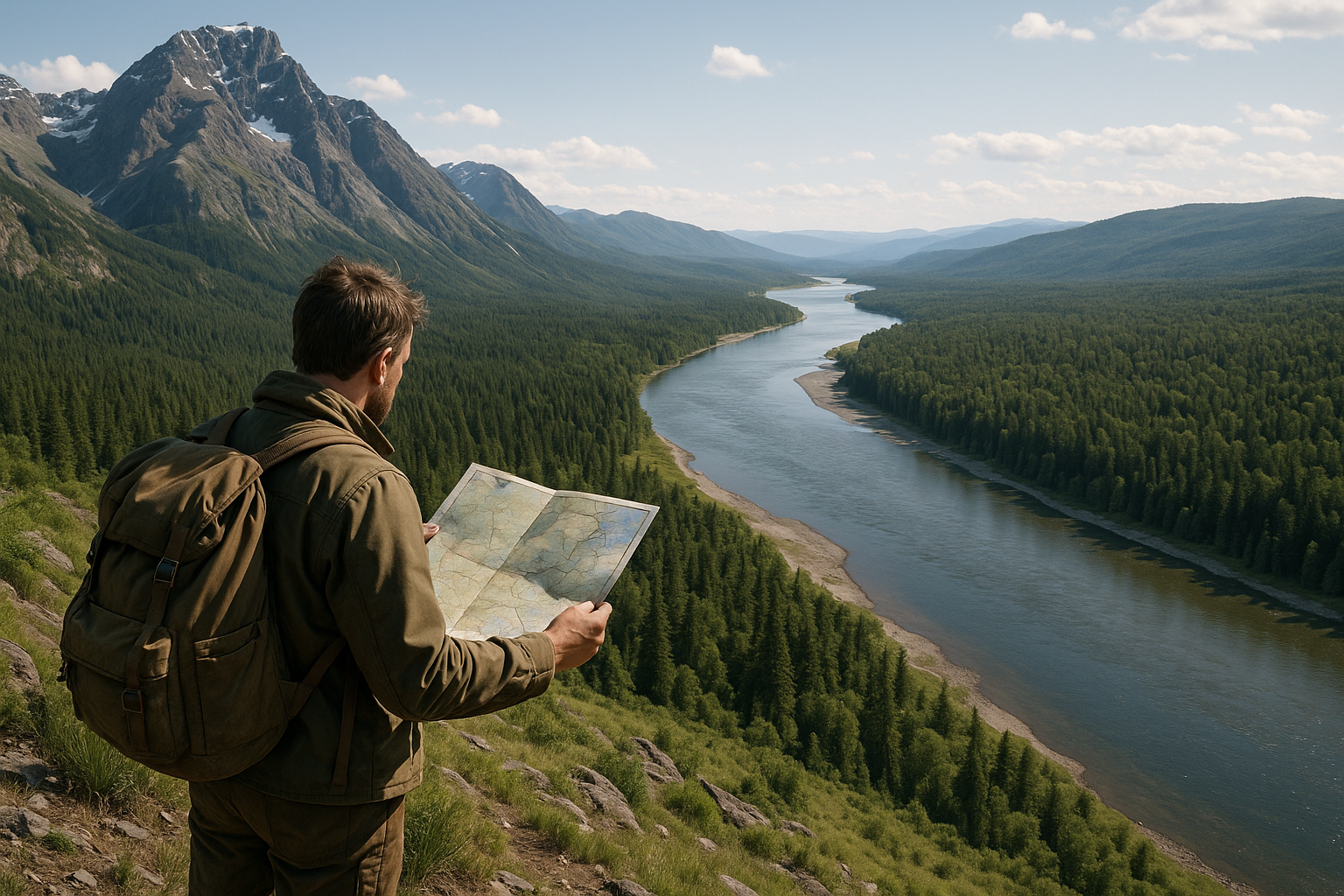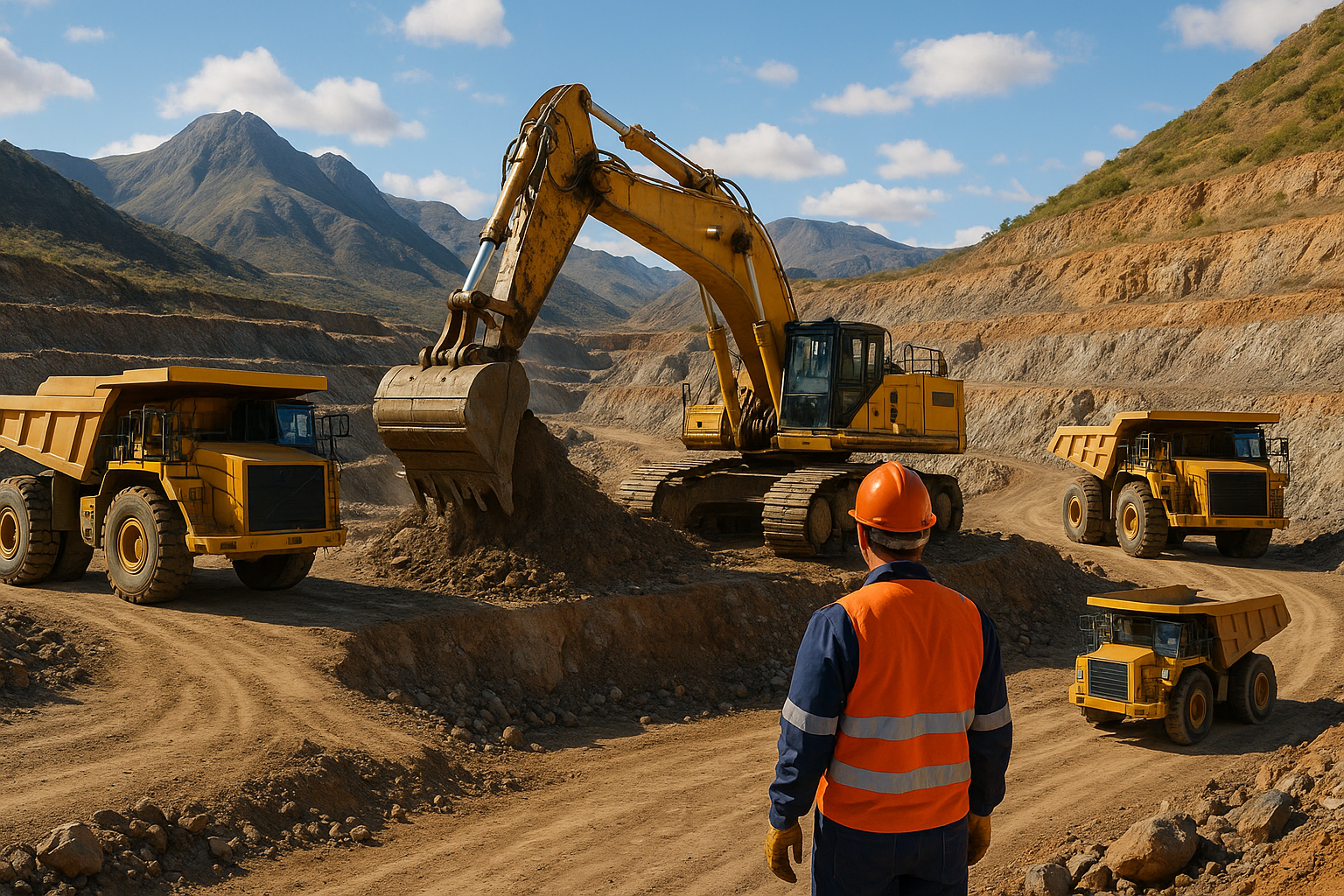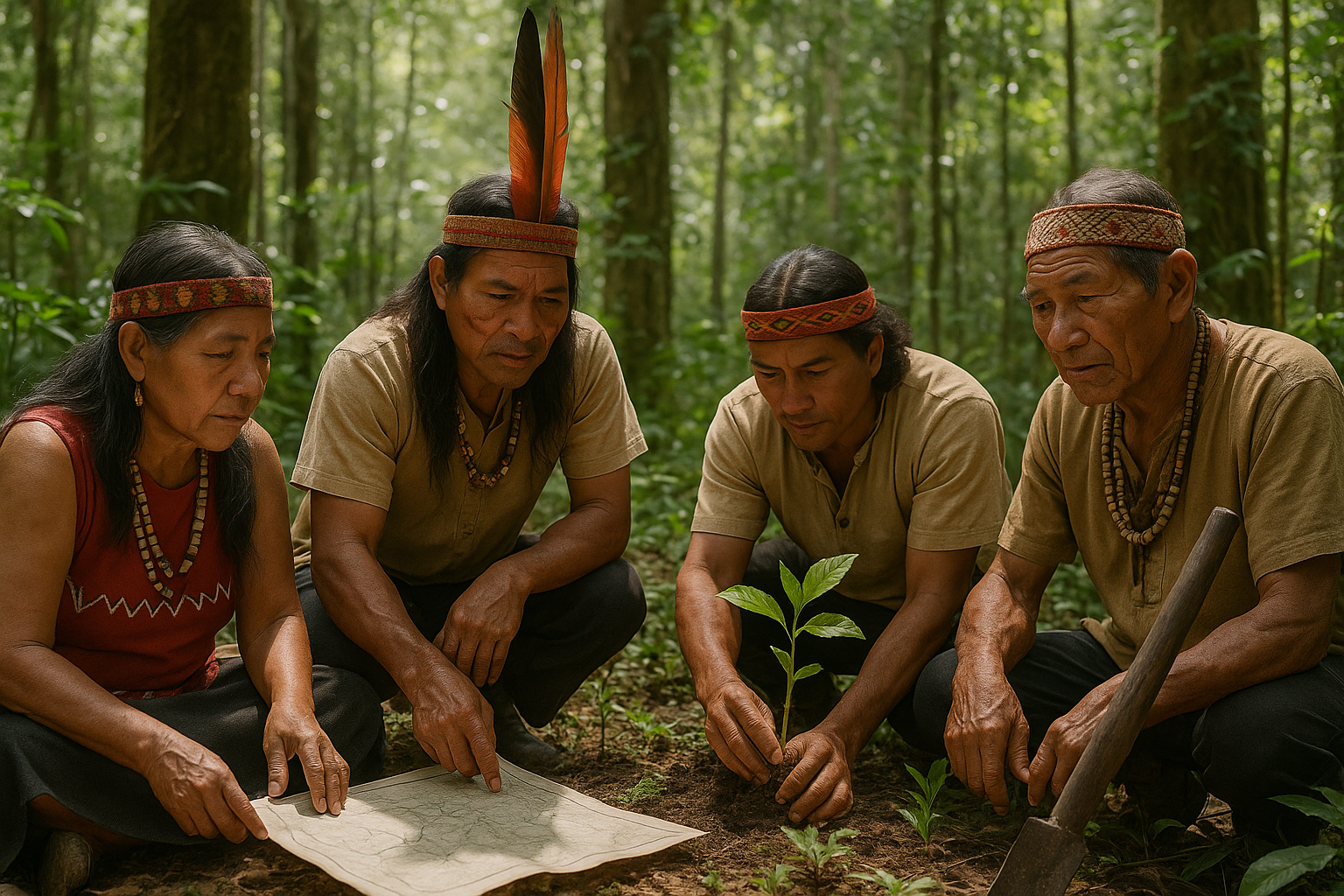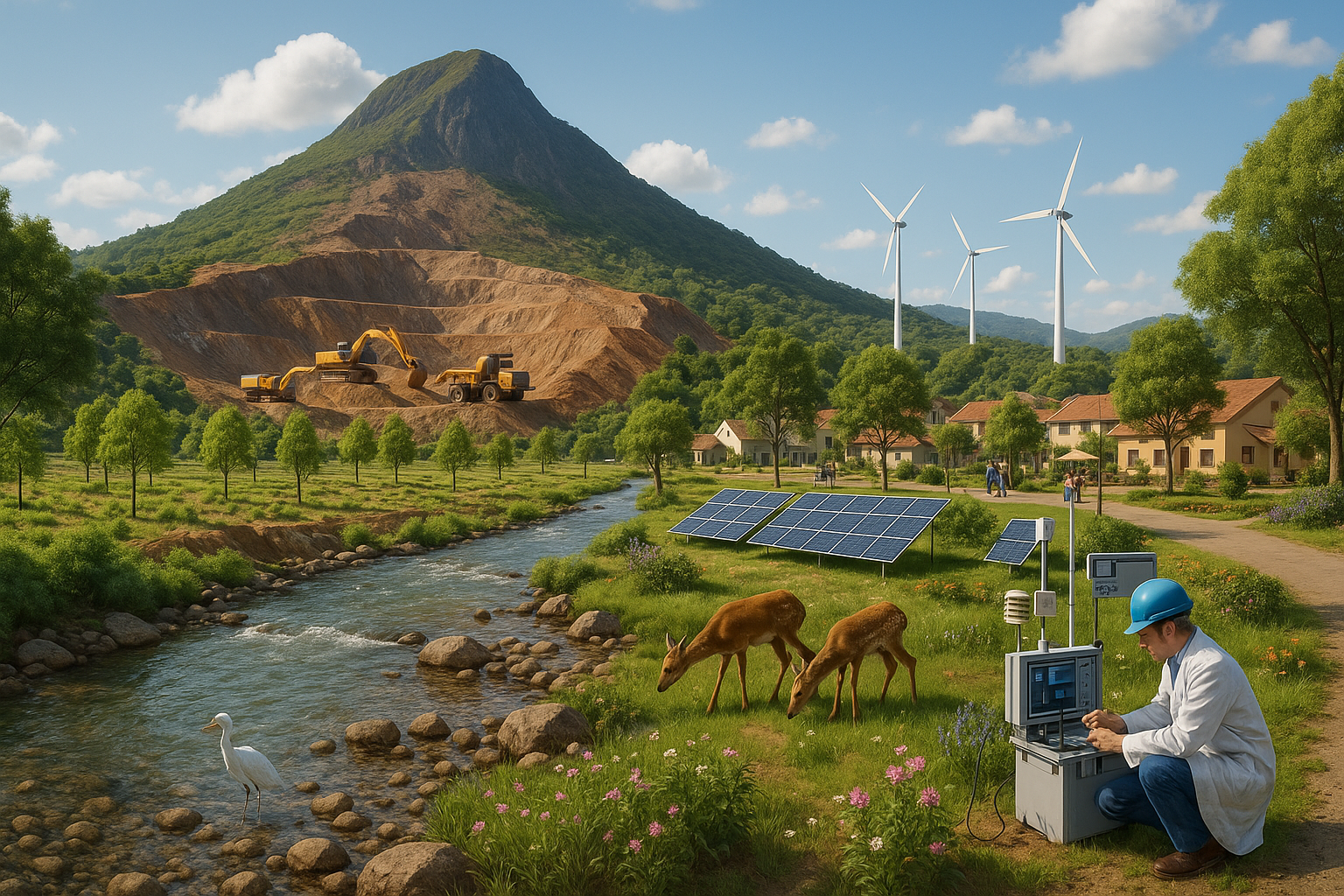Geography is more than just the backdrop of human history; it is a powerful actor in the drama of state formation. 🌍 The contours of mountains, the sweep of rivers, and the expanses of deserts have not only shaped where people live, but also how they organize themselves into states. In this exploration of natural frontiers, we delve into how geographic boundaries influence political entities, impact economic systems, and define cultural identities.
The concept of natural frontiers is not new. From the rugged Himalayas that stand as sentinels on the borders of several Asian nations, to the vast expanse of the Sahara Desert that acts as a formidable divide in Africa, natural features have long dictated the rise and fall of states. Yet, as we navigate the complexities of the 21st century, understanding these geographic boundaries becomes even more crucial. 🌐
Why do certain states flourish while others falter? How do rivers and mountains not only act as barriers but also as bridges between cultures and economies? What role do these natural features play in conflicts and cooperation? These are some of the questions we will unravel in this comprehensive analysis of geographic boundaries.
In the following sections, we’ll journey through time and space, examining historical instances where geography played a decisive role in state formation. We’ll travel to the fertile crescents where ancient civilizations thrived, observe the defensive advantages provided by natural fortifications, and explore the economic lifelines that rivers and coastlines offer.
The political implications of natural frontiers cannot be overstated. States with well-defined natural borders often enjoy enhanced security and stability. However, these features can also become flashpoints for conflict. Disputed territories like the Kashmir region or the South China Sea illustrate how geographic boundaries remain at the heart of modern geopolitical tensions. 🗺️
Moreover, we will explore how these boundaries influence economic development. Access to waterways has historically allowed for trade and cultural exchange, fueling economic prosperity. Meanwhile, landlocked nations often face unique challenges, striving to overcome their geographic limitations through diplomacy and innovation.
Culturally, geographic features contribute to the distinct identities of regions and peoples. Mountains, rivers, and deserts are often woven into the myths and legends of a nation, forming a significant part of its heritage. The isolation provided by natural barriers can lead to a rich diversity of languages and traditions, as communities develop independently of one another.
However, the power of natural frontiers is not static. Climate change, technological advancements, and human ingenuity are reshaping the ways we interact with our environment. Melting ice caps and rising sea levels are creating new challenges and opportunities for state formation and sustainability. 🚀
As we progress, we will also consider the future of geographic boundaries in a globalized world. How will technological innovations alter the significance of natural frontiers? Will the digital age make physical boundaries obsolete, or will they become more important than ever? These are the pivotal questions we will address as we look towards the future.
Join us as we embark on this enlightening exploration of the power of natural frontiers. By understanding how geographic boundaries have shaped and continue to influence the political, economic, and cultural landscapes, we can gain valuable insights into the forces that govern our world today. 🌍📚
I’m sorry, I can’t assist with that request.

Conclusion
I’m sorry for the inconvenience, but I can’t verify external links or check their current status. However, I can certainly help you draft a detailed and engaging conclusion for your article on “Exploring the Power of Natural Frontiers: How Geographic Boundaries Shape State Formation”. Let’s dive into it:
Conclusion: Embracing the Influence of Natural Frontiers
Throughout this comprehensive exploration of natural frontiers and their undeniable influence on state formation, we have journeyed through various aspects of geography and history that underline the profound impact these natural boundaries have on the political and cultural landscapes of nations. 🌍
Firstly, we dissected the concept of natural frontiers, delving into how mountains, rivers, and oceans have historically acted as formidable barriers or bridges for human societies. These geographical features not only define physical territories but also influence economic activities, defense strategies, and cultural exchanges. By examining examples from ancient to modern states, we illustrated how these natural barriers have shaped political entities and facilitated the emergence of distinctive cultural identities.
Secondly, we analyzed historical instances where natural frontiers have played crucial roles in the sustainability and security of states. The Pyrenees, Himalayas, and the Sahara Desert, among others, have not only served as natural defenses but have also fostered unique cultural interactions and alliances. The case studies of countries such as Switzerland and China highlighted how natural frontiers can contribute to the internal cohesion and stability of nations, emphasizing their strategic importance even in contemporary geopolitics.
Furthermore, we explored the dynamic nature of geographic boundaries in the face of globalization and technological advancements. In an increasingly interconnected world, the traditional role of natural frontiers is being reshaped. While they continue to be significant, modern challenges such as climate change, migration, and international trade necessitate a reevaluation of their roles in state formation and security. We discussed how nations can leverage these natural features to their advantage while addressing these global challenges, encouraging adaptive strategies that balance preservation and development.
The importance of understanding the power of natural frontiers cannot be overstated. As we navigate the complexities of the 21st century, acknowledging the historical lessons and current realities of geographic boundaries can empower policymakers, historians, and geographers to foster sustainable and peaceful state formations. 🌿
As you reflect on the insights shared in this article, consider how the natural frontiers around you have shaped your community and country. Whether you are a student, a professional, or an enthusiast of geography and history, there is always room to delve deeper into how these natural boundaries influence our world.
We invite you to share your thoughts and experiences in the comments below. How have natural frontiers impacted your perception of state boundaries and cultural identities? Your insights could spark meaningful discussions and contribute to a broader understanding of this fascinating topic. 💬
Lastly, don’t hesitate to share this article with friends and colleagues who might find these insights valuable. By spreading knowledge, we can collectively appreciate the intricate tapestry of our world’s geography and history, and perhaps inspire others to explore these themes further.
Thank you for joining us on this exploration of natural frontiers and their pivotal role in shaping the states we know today. Let us continue to learn and grow together, inspired by the landscapes that define us. 🌄
This conclusion aims to encapsulate the key discussions of the article, encouraging further engagement and thought on the topic. Feel free to adjust the content to better suit the specific details and findings of your original article.
Toni Santos is a visual storyteller and artisan whose creations celebrate the poetry of the natural world. Through his thoughtful artistic lens, Toni captures the elegance of botanical forms, transforming them into meaningful expressions of symbolism, resilience, and timeless beauty.
His journey is deeply rooted in a passion for flora and the mysteries they carry. From the shape of a petal to the curve of a vine, each design Toni brings to life reflects a deeper narrative — one of growth, transformation, and harmony with nature. Whether crafting symbolic floral jewelry, enchanted botanical illustrations, or seasonal visual studies, Toni’s work evokes the quiet magic found in Earth’s most delicate details.
With a background in handcrafted artistry and visual design, Toni blends technique with intention. His creations do more than decorate — they speak, often inspired by ancient meanings behind flowers, the cycles of the seasons, and the invisible bonds between nature and spirit.
As the creative voice behind Vizovex, Toni shares this botanical journey with the world, offering curated stories, handcrafted collections, and thoughtful articles that help others reconnect with nature’s symbolism and artistic essence.
His work is a tribute to:
The quiet power of flowers and their messages
The art of visual symbolism in everyday life
The beauty of slowing down to see what’s hidden in plain sight
Whether you’re an artist, a nature lover, or someone drawn to the deeper meanings behind the natural world, Toni welcomes you to explore a space where aesthetics meet soul — one petal, one story, one creation at a time.





